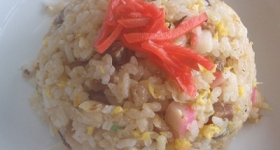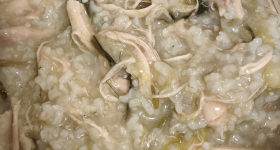Mott 32 is an international restaurant business run by Maximal Concepts that combines design, cuisine and storytelling in all three of their locations. Mott 32’s concept takes high-end luxury food into a more accessible atmosphere. The menu offers dim sum at any time along with a banquet assortment of Chinese food from Peking duck to Szechuan and Cantonese foods. During an interview with Malcolm Wood, the co-founder of Maximal Concepts, he described how Mott 32’s restaurants utilize design elements and ingredients to reflect the city. With locations in Hong Kong and Vancouver, Maximal Concepts opened a new restaurant in Las Vegas, NV, in December 2018. Each of these locations boasts menus highlighting localized products with a creative menu keen to that particular city’s identity and atmosphere. With design elements from interior designer Joyce Wang, the collected memorabilia portrays the imagined characters who once lived in these spaces. Wood aimed to “capture the essence of the city and follow a family that had immigrated abroad, wasn’t afraid to travel and collect items and see other places.” These imagined characters and storyline begins with Mott 32’s namesake, previously at 32 Mott St in New York City’s Chinatown.
The Mott 32 restaurant name originally came from the first convenience store on 32 Mott St, an essential location in the creation of New York’s Chinatown. Maximal Concepts wanted their restaurant to tell the story of a Cantonese family who travels all around the world. The design elements from Joyce Wang retells the life of this imagined family through collected artifacts, such as graffiti art on the walls, artwork, chandeliers and wallpaper. Wood’s belief that the idea of travel, and coming and going, are part of what it means to be from Hong Kong. This story of the movement of peoples is retold in Mott 32’s melding of Western and Chinese cooking techniques.
The history of 32 Mott St begins with a Chinese merchant, Wo Kee, who opened a shop on Mott St in 1872 and began a clustering of businesses around the intersection of Mott, Doyer and Pell Streets. 32 Mott St had been the longest continuously operating store in Chinatown until closing in 2003. 32 Mott St originally opened in Chinatown in 1891 by Lee Lok under the name Quong Yuen Shing & Company. Peter Lee, the son of the original owner, took over the business in the mid-1980’s and modernized the store to sell Asian giftware, porcelain and dishes to both tourists and locals alike. In its original state, Quong Yuen Shing sold medicinal herbs, groceries, restaurant supplies and silk for ceremonial clothing. However, it functioned as more than a store for many Chinese immigrants. The Chinese Exclusion Act of 1882 barred Chinese nationals from entering the country and restricted Chinese nationals who had already entered the country prior to the passage of the law from leaving the United States. It also brought violence and threats towards Chinese immigrants and Chinese Americans, thus driving them out of villages, homes and neighborhoods into centralized enclaves known as Chinatowns. These areas began to pop up first in the West, due to the large movement of Chinese laborers working in mining, railroad construction and fishery industries.[1] But Chinatowns later moved to the East Coast in New York and Philadelphia. Despite opening nine years after the passage of the Chinese Exclusion Act[2], Quong Yuen Shing became a “bachelors’ society” for men who had left their wives in China to work in the United States. This shop acted as a bunkhouse and bank for those looking for a place to sleep and store their money as Chinese immigrants were prohibited from opening bank accounts[3].
Founded on the stories of Cantonese travelers, Mott 32 celebrates a history of the movement and place-making done by our ancestors. For Malcolm Wood, he learned to embrace both his Chinese and English heritage from living with his grandmother in Taiwan and grandfather in England. He describes, “being half-half you embrace both sides and living in Hong Kong, it’s a city where they celebrate that. It’s traditional, modern, expat.” And here, Mott 32 wants to show and celebrate how moving between multiple countriesand identities and inhabiting places has always been a part of Chinese history. 32 Mott St was once a place of refuge for those immigrants excluded from the greater American culture. And even in its 131 years of business, 32 Mott St retained a collection of movement between China and New York City by selling giftware and figurines from China. 32 Mott St closed in 2003 after never fully recovering from the losses after the World Trade Center attacks in 2001. However, 32 Mott St can continue to live on through the stories and legacies of New York’s Chinatown and now, in the new migration stories that Mott 32 tells.
Mott 32 is fundamentally rooted in cuisine and creative ingredients that play with Western and Chinese cooking techniques. Wood understands that Mott 32 complicates tradition through cooking and might not attract older generations who grow up knowing that dim sum is served only for lunch. And when the Hong Kong Central location opened, the Maximal Concepts team was worried. “It was the hardest restaurant and menu to do as a group because we were doing Chinese food for Chinese customers in China. We were worried about the menu and in Chinese culture you are famous for one thing and that’s why you go to the restaurant.” Mott 32 emphasizes creative concepts in Chinese cuisine to highlight a global interconnectedness in design elements, cooking techniques and storytelling. By paying homage to the name once found at 32 Mott St in New York’s Chinatown, this restaurant only begins to describe the expansiveness in how restaurants and foods are retelling the histories of Chinese migration.










Comments